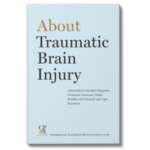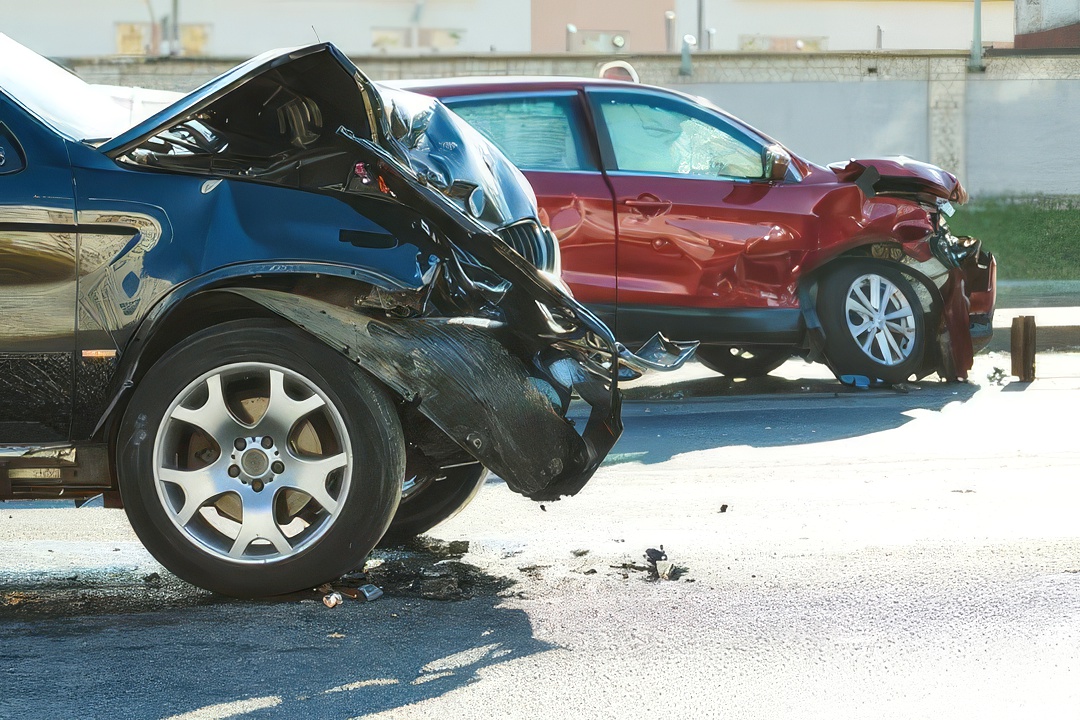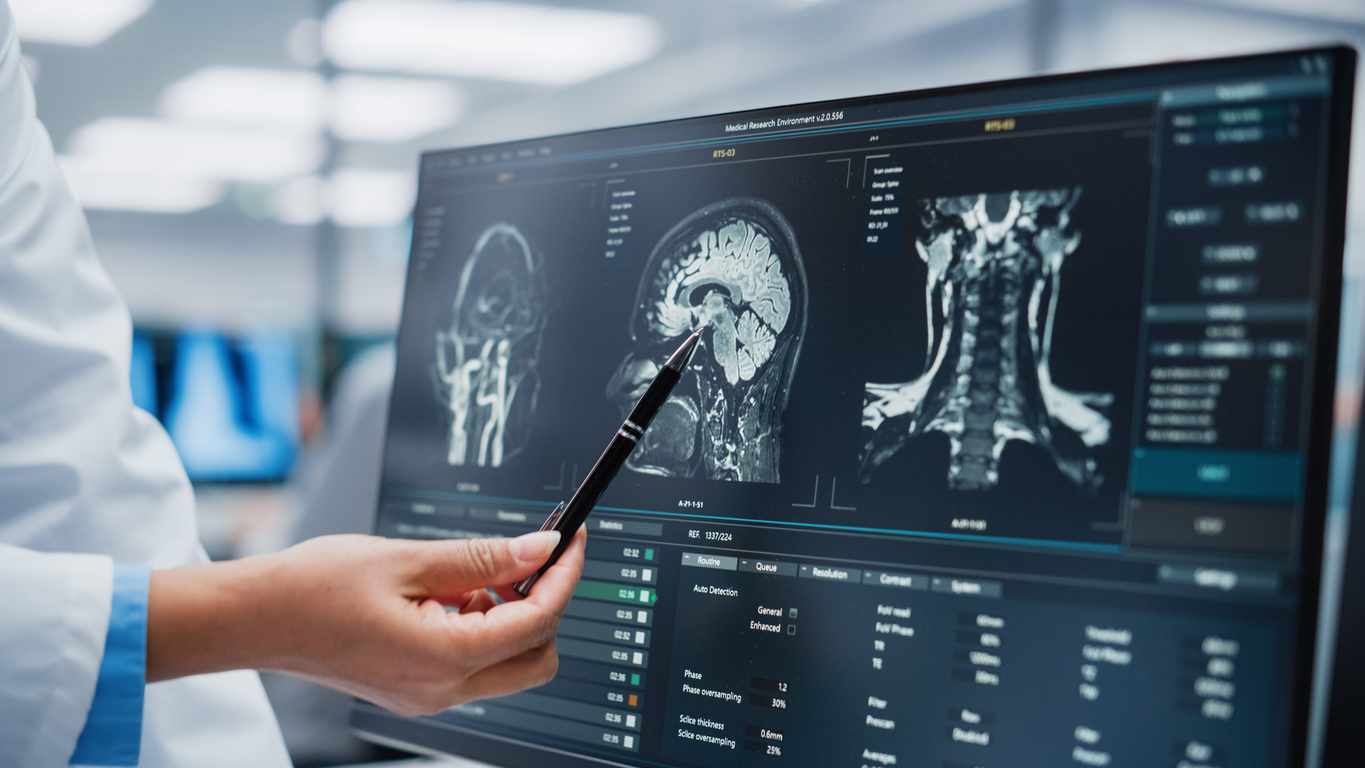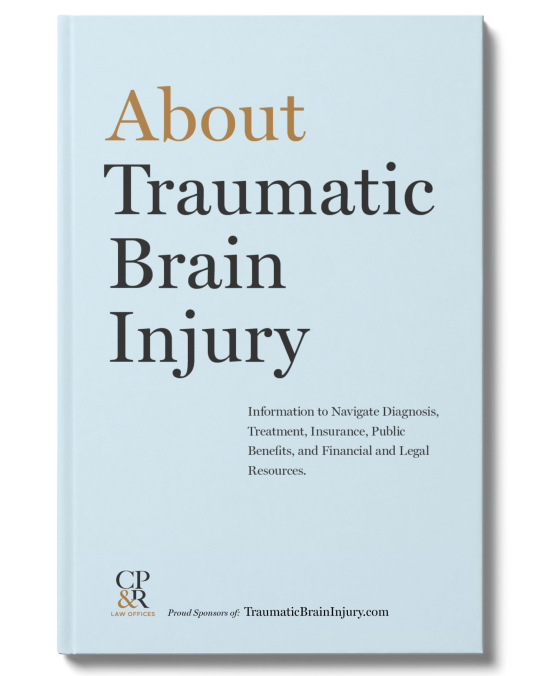Car Accidents: A Common Cause of Traumatic Brain Injury
High-impact forces from car collisions significantly raise the risk of TBI and a broad array of cognitive, physical, and emotional challenges.
Request our Free Book on Traumatic Brain Injury

According to the American Association of Neurological Surgeons, severe TBI requiring neurosurgery is often caused by motor vehicle crashes due to the high forces and impact associated with such collisions. When a vehicle is involved in any crash — head-on collision, side impact, or rollover — the occupants experience rapid changes in velocity. This sudden deceleration or acceleration causes the brain to move violently within the skull, leading to contusions, bruising, or even more severe injuries like skull fractures. The energy transferred during a motor vehicle crash can lead to forces that cause damage to brain tissue or disrupt normal brain function, resulting in a spectrum of cognitive, physical, and emotional challenges.
The nature of motor vehicle crashes often involves various risk factors that heighten the likelihood and severity of TBI. Distracted driving, driving under the influence of alcohol or drugs, speeding, and not wearing seat belts significantly increase the chances of a crash occurring and the severity of injuries sustained. Additionally, vulnerable populations, such as children and the elderly, are at particular risk during these incidents. Inadequate safety measures such as improper use of motor vehicle seats or lack of protective features in vehicles can cause TBI. Defective and dangerous designs of roadways, parking lots, and and manufacturing of motor vehicles can also cause or enhance brain injury sustained in car crashes.

How Do Motor Vehicle Crashes Cause Traumatic Brain Injury?
Trauma to the brain can occur during a motor vehicle crash in multiple ways.
Blunt trauma can occur when the skull strikes an object like a steering wheel or windshield or when the sheer force of the crash can cause a driver’s or passenger’s brain to collide against the internal hard bone of the skull. The reason why this can occur is that when a person moving quickly in a forward motion within a motor vehicle comes to a sudden stop, the brain continues its forward momentum, striking the bones and edges within the skull. This can cause brain bruising (also referred to as a contusion) and/or bleeding (also called hemorrhage), which may not even be visible at the time of injury.
A motor vehicle crash may also cause an open wound to the skull due to a variety of unfortunate circumstances, such as a car rollover, roof crush, or occupant ejection.
Regardless of the specific cause, the extent of the injury may be more severe due to outside factors or pre-existing conditions that contributed to the crash. It’s important for everyone involved in a motor vehicle crash to get prompt medical attention, evaluation, and treatment to achieve the best possible outcomes.
What Are the Signs and Symptoms of Traumatic Brain Injury?
If you or someone you love has suffered an injury or head trauma related to a motor vehicle crash, there are a variety of common TBI signs and symptoms you should look for. Be aware, however, that in addition to the conditions listed here, TBI can present in various other ways.
Crashworthiness: The Connection Between Motor Vehicle Crashes and Traumatic Brain Injury
Crashworthiness is a term used to describe a crucial aspect of vehicle design– how effectively a motor vehicle can protect its occupants in a collision. One significant concern in this area is the increased risk of brain injuries caused by defects in the design and manufacture of motor vehicles, which result in passengers getting enhanced injuries in a collision where those passengers should have walked away after the collision. For example, when the brain injury is caused when a belted passenger is ejected from the vehicle due to a defective seat belt, or when a brain injury is caused by a weak and dangerous car roof that collapses, but should not have, during a rollover. Defective vehicles increase the risk of sustaining traumatic brain injuries.
Defects in the design and manufacture can and have involved the following vehicle parts and features:
- Seatbelts
- Airbags
- Child seats
- Product safety recalls
- Defective tires or tire failure
- Improper window glazing
- Laminated versus tempered glass on windows and windshields
- Faulty door latches
- Improperly designed roofs
- Vehicle defects that lead to motor vehicle rollover
The legal principle known as the “Crashworthiness Doctrine” recognizes that car collisions are a fact of everyday life, and manufacturers must take them into account and protect passengers in the design. […]
“Vehicles must be made so that they include features to make them safe, and not increase the risk of enhanced brain injuries or death … in fact, the law requires that manufacturers take reasonable and practicable steps to make vehicles that protect passengers during crashes.” —Stewart Cohen, attorney and shareholder, Cohen, Placitella & Roth
What Do I Need to Know About the Diagnosis, Treatment, and Long-Term Outlook for Traumatic Brain Injury?
While some cases of TBI are called mild, the fact is that all brain injuries can be life-altering. That is why it’s vital to see a doctor as soon as possible for prompt diagnosis and treatment. For an in-depth discussion of these topics, read What Is Traumatic Brain Injury?

What Steps Can I Take to Protect Myself Against Motor Vehicle Crash-Induced Traumatic Brain Injury?
According to the U.S. Centers for Disease Control and Prevention, the four most important preventative measures you can take are:
- Wear a seat belt every time you drive or ride in a motor vehicle.
- Never drive while under the influence of alcohol or drugs.
- Ask your doctor or pharmacist to review all your prescription and over-the-counter medicines, herbal supplements, and vitamins to see if any might make you drowsy or dizzy while driving.
- Have your eyes examined annually to see if you need eyeglasses or a vision prescription update.
In addition, it’s important to keep your motor vehicle regularly maintained and stay hyper-vigilant about pedestrians and other vehicles — particularly motorcycles — while behind the wheel. Because motorcycles are much smaller than motor vehicles and trucks — and therefore less visible to other drivers — motor vehicle vs. motorcycle collisions are extremely common.
In many cases, drivers involved in crashes with motorcyclists admit that they “never saw the motorcycle” before an incident. Often, these crashes occur when the driver violates the right-of-way of the motorcyclist, putting them at fault for the incident. This happens so often that safety engineers have a named them an LBFTS—a “looked but failed to see” crash.
In a Science Daily article titled “Why Drivers May Fail to See Motorcycles in Plain Sight,” human factors/ergonomics researchers conclude that “the disproportionately high number of motorcycle-related traffic crashes may be linked to the way the human brain processes — or fails to process — information.” Their study explores how the concept of “inattentional blindness,” defined as “a person’s failure to notice an unexpected object located in plain sight,” might explain why LBFTS crashes are so common.
In these cases, even when drivers have a clear line of sight and road conditions that are free from hazards and distractions, the researchers say, “drivers will look in the direction of an oncoming motorcycle — and in some cases even appear to look directly at the motorcycle — but still pull out into its path.”
Motor Vehicle Insurance
Most states require automobile owners to carry a minimum amount of automobile insurance before a car can be registered and receive a license plate. However, most drivers do not have adequate coverage in the event of a catastrophic injury. States only require minimum liability insurance, which is the type of insurance that provides compensation to those people injured by insured negligent drivers.
There are many kinds of additional automobile insurance benefits that may be purchased but are not required: medical payments coverage or medpay (pays for medical bills only); comprehensive coverage (pays for any form of damage to the insured’s vehicle); collision coverage (pays only for collision damage to the insured’s vehicle); personal injury protection or PIP (pays for medical bills, funeral expenses, and more); and uninsured motorist coverage or UM and underinsured motorist coverage or UIM (pays for personal injuries and damages for the insured driver caused by drivers with too little or no insurance). In the case of a TBI injury, it is important to consult with an experienced TBI lawyer as soon as possible to maximize recovery and to discover all the insurance available.
Motor Vehicle Negligence
Motor vehicle laws are set by each of the fifty states. However, there are some general rules of the road that apply in most states as well as general exceptions to those rules. One general principle of driver responsibility is that a driver is required to always maintain reasonable control of the vehicle to prevent injuries to others. Additional general principles include:
- No driver is permitted to operate a vehicle recklessly, regardless of the speed limit.
- Drivers must operate their vehicles at a careful and prudent speed, which can vary based on conditions, such as snow, ice, or rain.
- Drivers are required to maintain a proper lookout and be aware of their surroundings, ensuring they can see vehicles or pedestrians in their path.
- Before starting, stopping, turning, changing lanes, or entering traffic from a parked position, drivers must verify that their movements can be made safely.
- Drivers have a duty to understand the characteristics of their vehicle and to exercise due care to prevent any damage associated with those characteristics.
A violation of traffic safety laws often serves as evidence of driver error in lawsuits. For example, if a driver fails to stop at a stop sign and collides with another vehicle already in the intersection, that violation can support a claim of driver negligence.
Each state also has other rules related to negligence. For example:
- The condition of the driver (such as illness, fatigue, intoxication, and inattention) will typically affect liability.
- The condition of the vehicle (such as known defects or problems in the brakes or steering or failing to pass state inspection) will also affect liability.
- Bars and restaurants that serve people who are intoxicated have a legal responsibility for those innocent people harmed by drunk drivers (known as dram shop claims).
- Car dealerships, auto repair shops, and vehicle inspection stations are responsible when negligent repairs and inspections lead to injuries.
There are also rules regarding the liability of car owners, who are responsible when they provide the car to an unfit or unlicensed individual or leave a vehicle unattended and running or with the keys in the vehicle (vicarious liability and negligent entrustment).
Of course, drivers have defenses against personal injury claims, including contributory or comparative negligence by the injured person; assumption of the risk, where an individual acknowledges the risks associated with any activity, but chooses to take part regardless (for example, agreeing to be a passenger in a vehicle knowing the driver is drunk); and the sudden emergency doctrine, where a driver is in an unexpected emergency situation. There are other defenses as well, such as a failure to use a seatbelt.
Most states allow for claims against the government for personal injury as well as for poorly designed roads, dangerous police chases, defective traffic controls, and dangerous conditions of the roadway. There are also rules against negligent conditions created by private contractors on roadways and prohibitions against negligently maintained trees and vegetation on property abutting roadways that block driver and pedestrian views. Buses, trucks, trolleys, cabs, and limos (common carriers) also have special rules governing their responsibility and standards of care on the roadways.
In sum, whenever there is a catastrophic injury arising from or involving a motor vehicle, an experienced team of lawyers must perform a detailed professional investigation.
What Legal Recourse Do I Have for a Traumatic Brain Injury Caused by a Motor Vehicle Crash?
Even in a one-vehicle crash, defects in the roadway or in the vehicle may have caused the incident or enhanced the injuries. It is important to immediately preserve all evidence and perform a professional investigation into motor vehicle collisions. If you or a loved one sustained a brain injury, you may wish to consult an experienced team of brain injury lawyers.
Need help investigating your legal rights related to a traumatic brain injury?
Speak to an experienced brain injury attorney team like Cohen, Placitella & Roth.
For five decades, CPR has successfully represented individuals and families in TBI cases nationwide working with qualified co-counsel.


Get Our Free Traumatic Brain Injury Book
To learn more about Traumatic Brain Injury request our comprehensive book, available for free directly to your inbox



